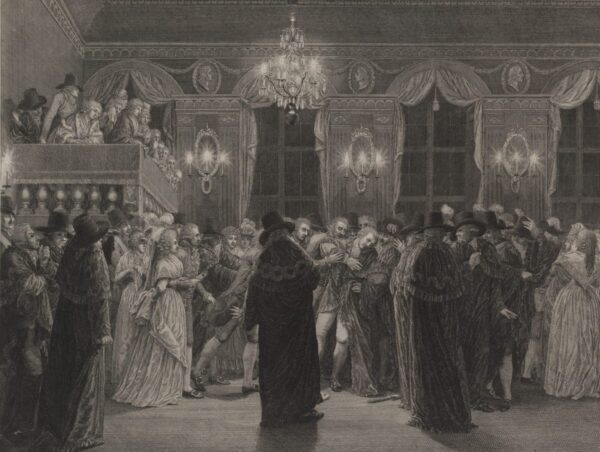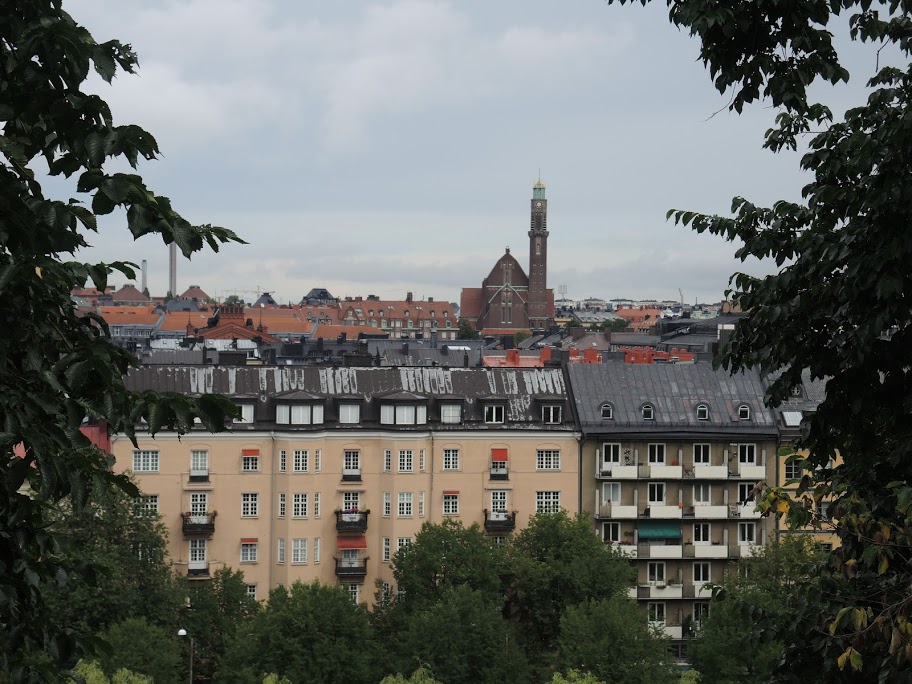Before the high point.
In my first post about Stockholm, I mentioned my plan to have a meal at the Grillska Huset on Stortoget. I wanted to do this not because its cuisine is particularly famous. In fact, it’s little more than a simple deli or cafeteria style restaurant that serves salads, soups, some smoked fish, quiches, and desserts. And it has limited seating. The food was fine but more important for me is the fact that the restaurant and adjoining bakery are run by the Stockholm City Mission and the profits support their charity work.
After lunch, I faced another decision point. I could try to use the limited time remaining before I had to meet the bus at the hotel to essentially race through the Nobel Museum just across the square or, since the rain had stopped, I could engage in one of my favorite pastimes and simply take a walk to a part of the city I hadn’t yet seen. I decided to pass on the opportunity to spend some time with Stockholm’s “Nobel-ity” and opted for the latter.
I crossed the Riksbron (National Bridge) back onto Drottninggatan and, looking at the straight two kilometers or so of street ahead of me decided that, after a small detour or two I’d traverse the length of this pedestrian street and minimize the chance that I’d find myself lost (oxymoron intended) as I had in several cities earlier on this trip.
Spurred by a misunderstanding, my first detour took me to the Royal Swedish Opera House.
It’s an impressive edifice that’s considered by some to be among the 10 most beautiful opera houses in the world. But that wasn’t the reason I wanted a photo. My reason for visiting was my misunderstanding of a story about King Gustav III (that I’ve previously promised to relate). Gustav III founded the Royal Opera and its first performance was given in January 1773. He also commissioned the building of the first opera house which opened nine years later.
In addition to opera performances, the first or (as I came to learn later) Gustavian Opera House, hosted public masked balls. Despite his patronage of the arts, Gustav’s foreign policy, which found Sweden frequently at war with Russia, made him more than a little unpopular among the nobility. The king arrived at the opera house on the evening of 16 March 1792 to have dinner with friends and afterward attend one of those masked balls.
At midnight, in the grand foyer of the Opera House, John Jakob Anckarström together with six co-conspirators all wearing black masks surrounded the king. Standing behind him, Anckarström shot the king once but Gustav didn’t die that evening. In fact, Count Hans Henrik von Essen and a group of soldiers took him to his private room where he had supper. He returned to the Royal Palace and continued working as head of state for nearly two weeks before dying of sepsis on 29 March.

[The Assassination of Gustav III as imagined by Abraham Wolfgang Küfner – Public Domain.]
This assassination in turn became the inspiration (certain specifics were changed) for Antonio Somma to write the libretto for Giuseppe Verdi’s Un ballo in maschera (A Masked Ball).
However, the Royal Opera House where Gustav was shot was demolished in 1892. The current building called Operan (recall that Scandinavian languages signify the direct article by affixing the indirect article as a suffix making this building simply, The Opera) opened in 1899. So, I didn’t see the building where the king was assassinated thus inspiring a classic Verdi opera. But I did see a beautiful building and, if you didn’t know it before, you now know the story behind the story.
My other detour was to walk past the Concert Hall. It’s in this building that Nobel Laureates, excepting the Peace Prize recipient, receive their awards. The square in front of the building serves as a (mostly farmer’s) market. (The photos are in the same folder I linked in part one but I’ll save you the trouble of seeking that out and link it here again.)
The high point at last
I returned to Drottninggattan and as I moved farther north along the longest pedestrian street in Stockholm, I encountered fewer and fewer pedestrians. I also noticed a green and rather steep hill ahead of me.
As it turned out, the hill is the Observatorielunden, one of the many parks that dot the city and the home to the Old Stockholm Observatory. This observatory, which was built in the 18th century, sits at the top of the hill that I finally crested after greetings from three off leash but very friendly dogs. Today, the observatory serves as a museum and it holds the distinction of maintaining the oldest continuous daily temperature record in the world with records dating back to 1756. But I had even less time to visit it than I would have had in the Nobel Museum so I passed the observatory to get a view of the part of the city called Vasastaden or Vasastan (I think). I’m sure you recognize the Vasa part of the name by now.
Also enjoying the view was another tourist, an Asian fellow who excitedly told me that according to Siri, Observatory Hill is the highest point in Stockholm. I took him at his word and, accurate or not, I did enjoy some lovely views as well as walking past a few shops (that you can see in the photo album) not intended to cater to the tourist trade before returning to the hotel.
The bus ride to the ferry afforded us a glimpse of the 1912 Olympic Stadium where Jim Thorpe completed his unprecedented and unmatched feat of winning both the decathlon and the first modern pentathlon. Unfortunately, we zipped past it too quickly for me to manage even a blurred photo through the bus window.
Tonight, we depart Scandinavia to sail across the Baltic to visit, albeit briefly, Helsinki – the capital of Finland – one of the Nordic countries. I’ll begin my report on that in my next post.

